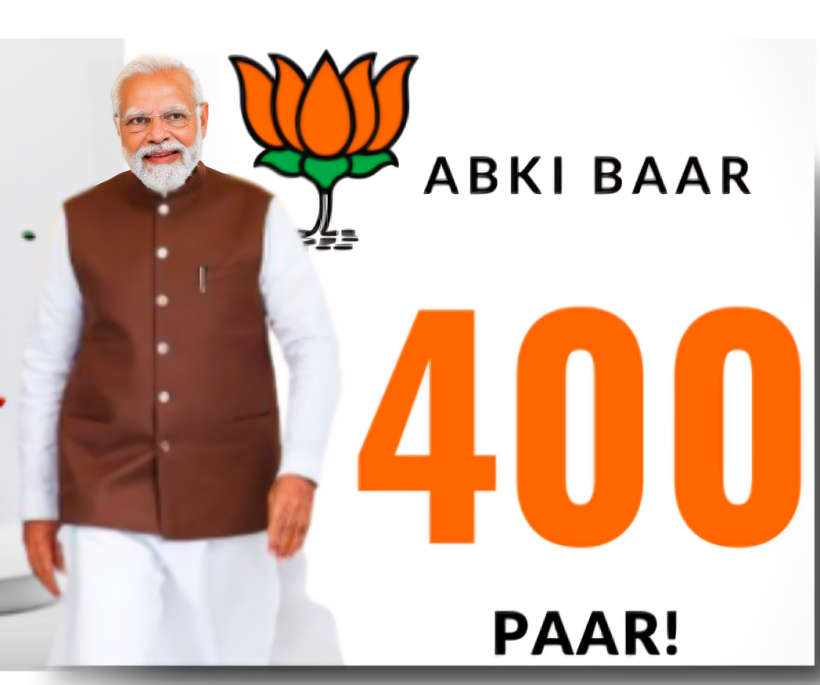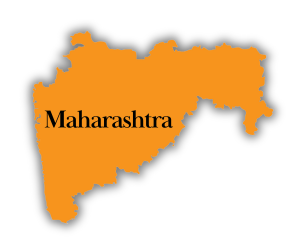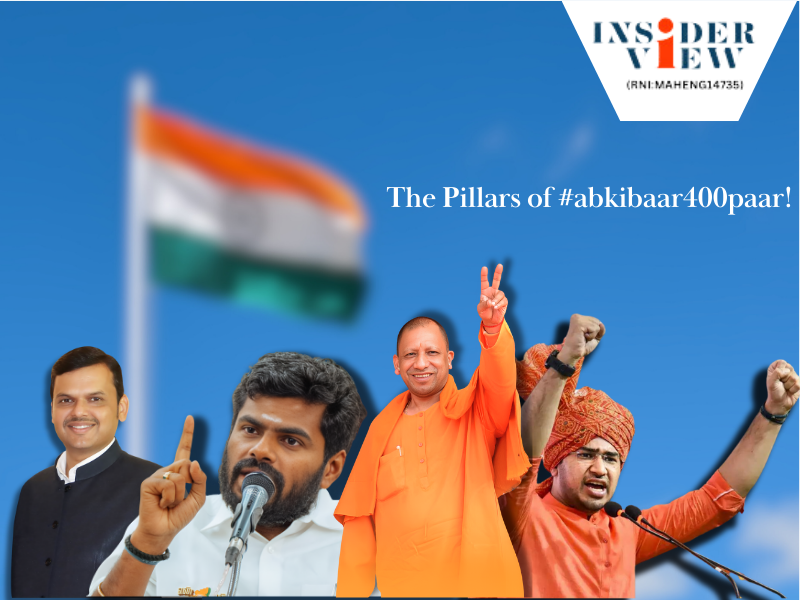Introduction
As India braces for the 2024 Lok Sabha elections, all eyes are on the Bhartiya Janata Party (BJP), which aims to achieve an unprecedented milestone of securing over 400 parliamentary seats, with the call of #abkibaar400paar! Each state shapes the outcomes of national elections, characterizing the Indian political landscape with complexity and diversity, making it the biggest democratic elections across the globe. This ambitious goal is rooted in the BJP’s strategic consolidation of support across essential states, including Maharashtra, Gujarat, Rajasthan, Madhya Pradesh, Uttar Pradesh, Bihar, and Karnataka. Of the total 543 seats, these six states make up of a total 247 seats! No doubt that makes them ideal game changers. Drawing insights from political analysts and on-the-ground developments, this comprehensive article explores the intricate dynamics, historical performance, current political scenarios, and potential strategies of the BJP in these crucial states.

BJP’s Historical Performance in the Six States

With its intricate socio-political landscape, Maharashtra has witnessed the BJP’s strategic manoeuvring in alliance with the Shiv Sena, culminating in significant electoral gains. The symbiotic relationship between the two parties has not only secured a formidable number of seats. Still, it has also solidified the BJP’s presence in the state’s political landscape. Of the 48 seats, the BJP-SS alliance bagged 42 in 2014 and 41 in the 2019 elections.

Conversely, in Gujarat, the BJP’s stronghold and the party’s historical dominance can be attributed to the charismatic leadership of Prime Minister Narendra Modi and the state’s
remarkable economic growth under BJP governance. Modi’s persona and developmental agenda have resonated deeply with Gujarat’s electorate, contributing to the party’s sustained electoral success in the region.

In both Madhya Pradesh and Rajasthan, the Bharatiya Janata Party (BJP) has historically been a formidable force, securing significant victories in the 2014 and 2019 general elections. In 2014, riding on the wave of Narendra Modi’s popularity and a strong antiincumbency sentiment against the Congress-led UPA government, the BJP swept both states, winning a majority of parliamentary seats. The party’s performance was particularly remarkable in Madhya Pradesh, where it secured 27 out of 29 seats, and in Rajasthan, where it won 25 out of 25 seats. This overwhelming mandate underscored the BJP’s widespread appeal and organizational strength across urban and rural constituencies.

In the subsequent 2019 general elections, the BJP maintained its dominance in both Madhya Pradesh and Rajasthan, albeit withslightly reduced margins. In Madhya Pradesh, the BJP secured 28 out of 29 seats, consolidating its position as the preeminent political force in the state. Similarly, in Rajasthan, the BJP won 24 out of 25 seats, reaffirming its popularity among voters. These electoral victories reflected the BJP’s ability to resonate with voters on key issues, its effective campaign strategies, and its robust organizational machinery.
Building on its past successes and leveraging the momentum generated by previous electoral triumphs, the BJP aims to capitalize on prevailing sentiments and secure maximum seats in both Madhya Pradesh and Rajasthan in the upcoming elections.

In Uttar Pradesh, the BJP’s landslide victory in the 2017 state assembly elections reaffirmed its dominance in the heartland state. The party’s resounding mandate underscored its organizational prowess and the resonance of its developmental agenda with the electorate. In the 2014 and 2019 general elections, the Bharatiya Janata Party (BJP) exhibited remarkable performance in the state of Uttar Pradesh, cementing its political dominance in the region. In 2014, riding on the wave of the Narendra Modi-led campaign promising development and good governance, the BJP secured a historic victory by winning 71 out of 80 parliamentary seats in Uttar Pradesh. This overwhelming triumph marked a significant shift in the state’s political landscape,
with the BJP securing an unprecedented mandate.
In the subsequent 2019 elections, the BJP bagged 62 seats.

However, Bihar’s complex alliance politics presents unique challenges and opportunities for the BJP. Navigating through the intricacies of coalition dynamics while retaining its core support base remains imperative for the party’s electoral success in the state. The BJP’s historical performance in these crucial states reflects a tapestry of strategic alliances, charismatic leadership, and dynamic electoral landscapes.
As the party charts its course towards the 2024 Lok Sabha elections, understanding and adapting to the evolving socio-political dynamics in each state will be paramount for securing electoral victories and realizing its ambitious goal of 400 parliamentary seats.
Current Political Scenario in the Six States
The current political scenario in the six states presents a multifaceted landscape, blending opportunities and challenges for the Bhartiya Janata Party (BJP). In Maharashtra, the political arena underwent a seismic shift with the recent rupture in the alliance with the Shiv Sena, heralding the emergence of new political configurations that have redefined traditional power dynamics.
In Gujarat, a state historically considered a stronghold for the Bhartiya Janata Party, the political landscape is witnessing both continuity and change as the country gears up for the upcoming Lok Sabha elections. With key constituencies like Gandhinagar, Porbandar, Rajkot,Surat, and Bharuch in the spotlight, the BJP is facing both internal and external challenges. Gandhinagar, a bastion for the BJP
and once represented by stalwarts like Atal Bihari Vajpayee and L K Advani, is currently held by Amit Shah, reflecting the party’s strong presence in urban centres.
However, with the decline in veteran leaders and the emergence of new faces, there is a shifting dynamic within the party’s stronghold regions.
In constituencies like Porbandar and Rajkot, dominated by the Patel community, particularly the Leva Patidars, the BJP’s hold remains firm, albeit with occasional exceptions like the Congress victory in Porbandar in 2009. Union Minister Mansukh Manda Viya’s candidacy from Porbandar highlights the BJP’s strategy to consolidate support among the Patidar community. Similarly, in Rajkot, where the BJP has been consistently victorious since 1989, the party’s candidate Purshottam Rupala, a close aide of Prime Minister Narendra Modi, underscores efforts to maintain its electoral dominance.

However, the BJP faces challenges in constituencies like Bharuch, where the combined opposition of the Congress and the Aam Aadmi Party poses a threat to its longstanding dominance.
Despite facing some headwinds, the BJP’s organizational machinery and strategic alliances position it as a formidable force in Gujarat’s political arena as the nation heads towards the crucial 2024 Lok Sabha elections. Uttar Pradesh, a pivotal battleground state, remains a stronghold for the BJP. However, amidst the ever-evolving socio-political milieu, the party confronts the formidable task of sustaining its popularity and electoral dominance.

The intricate web of alliance dynamics and regional intricacies in Bihar presents a labyrinthine challenge for the BJP’s electoral strategy. The alliance between the Rashtriya Janata Dal (RJD) and Janata Dal (JD) was a significant political coalition in Indian politics, particularly in the state of Bihar. Their partnership was rooted in a shared ideology of social justice and empowerment of marginalized communities. However, the alliance faced internal strains due to differences in leadership styles and policy approaches. Despite initial success in Bihar politics, cracks began to emerge, primarily stemming from disagreements over governance priorities and power-sharing arrangements. These tensions eventually led to the dissolution of the alliance, marking a pivotal moment in Bihar’s political landscape.
Following the break-up of the RJD-JD alliance, Nitish Kumar, the leader of JD, embarked on a strategic shift towards aligning with the brand of Narendra Modi, the Prime Minister of India, and his Bharatiya Janata Party (BJP). Recognizing the growing popularity of Modi’s leadership and his party’s agenda, Nitish Kumar sought to position himself as an ally of the ruling establishment ahead of the 2024 Lok Sabha polls. By aligning with Brand Modi, Nitish aimed to tap into the broader national narrative and leverage the BJP’s organizational strength and electoral machinery.
This move signaled a significant realignment in Bihar’s political dynamics and set the stage for a fiercely contested electoral battle in the upcoming polls. Navigating these complexities demands deft manoeuvring and adept coalition management.
As Karnataka prepares for the 2024 Lok Sabha elections, the Bharatiya Janata Party (BJP) faces a complex political scenario. Despite its recent success in winning 25 out of 28 parliamentary seats in 2019 and forming the state government under B.S. Yediyurappa’s leadership, internal and external challenges persist. Yediyurappa’s resignation amidst corruption allegations and internal factionalism within the party have raised concerns about the BJP’s prospects. The fact that the Congress party took over the reign of Kartanaka with a thumping majority from BJP in the recent state elections cannot be ignored. To maintain its dominance, the BJP must navigate shifting political dynamics and sustain its coalition with regional parties. While the Congress and Janata Dal (Secular) have seen limited success, regional parties like the JD(S) retain influence, particularly in southern Karnataka. Thus, the BJP’s ability to navigate these challenges and sustain its coalition will be crucial in securing victories in the upcoming Lok Sabha elections.
Impact of National Politics
The BJP’s electoral success in various states is heavily influenced by national political dynamics and policies. The popularity of leaders like Prime Minister Modi significantly impacts voter sentiment and electoral outcomes. The party’s performance at the central level and the Prime Minister’s implementation of key policies reinforces voter trust in BJP governance. Additionally, policy decisions on issues like economic reforms and national security can greatly affect the BJP’s electoral prospects in these states.
By aligning its agenda with national priorities and effectively communicating its vision for development, the BJP can capitalize on synergies between national and regional dynamics to consolidate its electoral base and secure seats in crucial battleground states.

Maharashtra, Uttar Pradesh, Madhya Pradesh, Gujarat, Rajasthan & Karnataka form the true pillars of the BJP’s current call #abkibaar400paar! In the 2014 general elections, BJP won a landslide 71 seats in Uttar Pradesh though the 2019 tally dwindled to 62. Gujarat remained a stronghold for the BJP, consistently winning a significant majority of seats with 26 seats in 2014 and all 26 seats again in 2019. In Maharashtra, the BJP, in alliance with other parties, secured 42 seats in 2014 and 41 seats again in 2019. Rajasthan saw the BJP winning all 25 seats in 2014, with a slight decrease to 24 seats in 2019, but still performing relatively well. In Karnataka, the BJP secured 17 seats in 2014 and improved to 25 seats in 2019. Similarly, in Madhya Pradesh, the BJP maintained its dominance with 27 seats in 2014 and 28 seats in 2019. In Bihar, BJP swept 22 of the 40 seats in 2014 owing to the Modi wave, and thanks to the palaturam strategy of Nitish, the tally dropped by 5, tallying 17 seats in 2019.
The BJP is cognizant that, alongside concentrating on securing seats in the southern states, maintaining focus on these six states, which are crucial for forming a government, is paramount. They have taken a strategic step back by welcoming JD-U chief Nitish Kumar into their ranks, despite Amit Shah’s prior statement indicating closed doors for Nitish. Additionally, they have diligently collaborated with DCM Devendra Fadnavis to ensure the formation of a three-party alliance, aiming to secure at least their share – the 41 seats won in the 2019 general elections.
Analysing electoral scenarios and identifying target constituencies within each state can help the party strategize effectively. By focusing on critical battlegrounds and maximizing its strengths while addressing weaknesses, the BJP can work towards achieving its ambitious electoral goal.
Maharashtra: A Crucial Battleground
- Maharashtra, with its allocation of 48 Lok Sabha seats, has historically been a hotly contested battleground, shaping the national political landscape.
- The BJP’s alliance with the newly emerged & on-the-ground Shiv Sena, a regional powerhouse, has played a pivotal role in consolidating its position in the state.
- The NCP faction led by Ajit Pawar brings its own loyal voter base, especially in Western Maharashtra and other influential regions, bolstering the BJP’s position.
- Aligning with the ShivSena and Ajit Pawar’s NCP faction reduces fragmentation of anti-BJP votes, consolidating BJP’s position. The coalition minimizes the risk of vote-splitting, ensuring a more favourable electoral arithmetic for the BJP.
- Post the dubious performance of the Maha Vikas Aaghadi (MVA) in its two and a half years, Maharashtra has seen the successful implementation of infrastructure projects and welfare schemes which has further bolstered their appeal across diverse demographics, particularly in the rural areas.

- Initiatives such as the Maharashtra Samruddhi Mahamarg (Expressway) and Jalyukt Shivar Abhiyan (Water Revolution Scheme) have addressed long-standing development gaps, earning the party significant electoral dividends.
- The BJP’s adept coalition management and strategic outreach efforts have further solidified its electoral prospects in Maharashtra.
Gujarat: Modi’s Citadel
- Gujarat, Prime Minister Narendra Modi’s home state, remains a stronghold for the BJP, owing to its enduring support base and economic growth trajectory.
- The state’s consistent development under successive BJP governments has cultivated a sense of trust and loyalty among voters.
- Modi’s leadership narrative, intertwined with Gujarat’s prosperity story, resonates deeply with Gujarati voters, providing the BJP with a formidable electoral advantage.
- Emphasis on industrialization, infrastructure development, and initiatives such as the Vibrant Gujarat Summit have further cemented the BJP’s dominance in the state.
Rajasthan: A Story of Resurgence
- Rajasthan, marked by alternating political dynamics between the BJP and the Congress, has witnessed a notable resurgence of the BJP in recent years.
- The party’s landslide victory of 24 out of the 25 seats in the 2019 elections underscored its renewed appeal and organizational strength.
- The party’s landslide victory of 24 out of the 25 seats in the 2019 elections underscored its renewed appeal and organizational strength.
- Governance reforms addressing water scarcity, unemployment, and rural development have resonated with voters, particularly in rural areas.
- Strategic alliances with influential community leaders and focused grassroots outreach have expanded the BJP’s support base across the state. With momentum on its side, the BJP is poised to capitalize on Rajasthan’s electoral dynamics to further bolster its tally in the Lok Sabha.
Madhya Pradesh: Fortress of Support
- Madhya Pradesh, boasting 29 Lok Sabha seats, has long been considered a stronghold for the BJP, owing to its ideological resonance and governance track record.
- The party’s proactive measures to address agricultural challenges, including the Bhavantar Bhugtan Yojana, have earned it significant goodwill among farmers.Shivraj Singh Chouhan (fondly referred as Mamaji) has played a formidable leadership role and mass appeal have further strengthened the BJP’s position in the state.
- Strategic alliances with regional parties and focused outreach efforts to marginalized communities have broadened the BJP’s electoral base.
- With a solid organizational structure and efficient campaign machinery, the BJP is wellpositioned to maintain its electoral dominance in Madhya Pradesh.
Uttar Pradesh: The Electoral Powerhouse
- Uttar Pradesh, with its staggering allocation of 80 Lok Sabha seats, is a decisive battleground that shapes the BJP’s electoral fortunes.
- The party’s historic victory in the 2017 state assembly elections underscored its unmatched organizational strength and mass appeal.
- Prime Minister Modi and Chief Minister Yogi Adityanath’s charismatic leadership and the BJP’s Hindutva agenda resonate deeply with the state’s diverse electorate.
- Effective implementation of welfare schemes such as the Pradhan Mantri Awas Yojana and Swachh Bharat Abhiyan has bolstered the BJP’s support base.
- With meticulous candidate selection and extensive campaign infrastructure, the BJP remains the frontrunner in Uttar Pradesh’s fiercely contested electoral landscape.
Bihar: Navigating Alliance Dynamics
- Bihar’s complex political terrain demands adept coalition management and strategic alliances.
- The BJP’s alliance with regional parties such as the Janata Dal (United) and the Lok Janshakti Party has bolstered its electoral prospects in the state.
- Chief Minister Nitish Kumar’s leadership and the BJP’s ideological alignment have forged a formidable alliance that resonates with Bihar’s electorate.
- Emphasis on infrastructure development, law and order, and governance has struck a chord with voters, particularly in rural areas.
- The BJP’s ability to navigate alliance dynamics while retaining its core support base positions it favourably for electoral success in Bihar.
Karnataka: Strengthening the BJP’s Grip
- Karnataka, with 28 Lok Sabha seats, has emerged as a crucial battleground in South India, where the BJP aims to strengthen its presence.
- The party’s concerted efforts to expand its footprint in the state have yielded significant electoral gains, particularly in urban centres.
- Proactive governance initiatives, including subsidized food grains and infrastructure development, resonate with voters across rural and urban constituencies.
- Strategic alliances with influential regional leaders and focused communication strategies have bolstered the BJP’s electoral prospects.
- Karnataka’s electoral dynamics, characterized by a mix of linguistic and regional identities, further fortify the BJP’s trajectory towards achieving 400 seats in the Lok Sabha.

Conclusion
In conclusion, the BJP’s pursuit of securing 400 Lok Sabha seats in the 2024 elections is firmly rooted in its meticulous strategy of consolidating support across pivotal states such as Maharashtra, Gujarat, Rajasthan, Madhya Pradesh, Uttar Pradesh, Bihar, and Karnataka. By leveraging its track record of effective governance, widespread appeal among diverse demographics, and unparalleled organizational capabilities, the BJP is poised to harness the intricate electoral dynamics and forge strategic alliances to attain its ambitious electoral milestone. However, amidst the ever-evolving political landscape, the BJP must remain agile, adaptable, and attuned to the shifting aspirations of the Indian electorate. The party must maintain its responsiveness and commitment to addressing the evolving needs and expectations of the populace to secure a resounding mandate in the upcoming Lok Sabha elections. Only by staying abreast of the changing tides of public sentiment and consistently delivering on its promises can the BJP realize its vision of a decisive victory with 400 parliamentary seats.
Author :
Rohan Ravindra Ambike



Leave a Reply